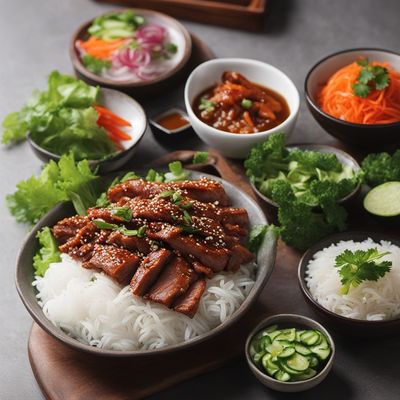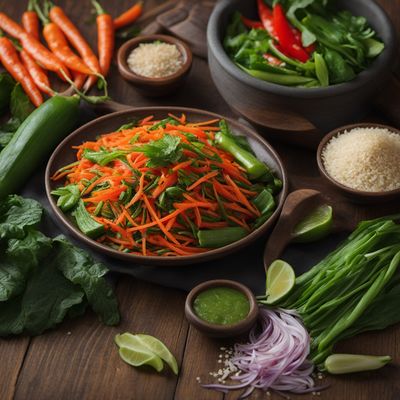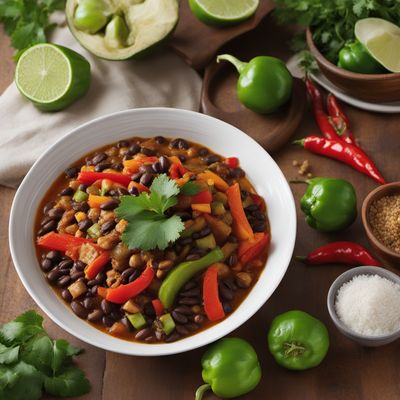
Ingredient
Wine grapes
The Vineyard's Gems
Wine grapes come in a wide range of varieties, each with its own unique characteristics. They can be red, green, or purple in color, and their flavors can range from sweet and juicy to tart and tangy. The texture of wine grapes varies depending on the variety, with some being firm and crisp, while others are soft and bursting with juice.
Origins and history
The cultivation of wine grapes dates back thousands of years, with evidence of winemaking dating back to ancient civilizations in Mesopotamia, Egypt, and Greece. Wine grapes are grown in vineyards around the world, with notable regions including France, Italy, Spain, the United States, and Australia.
Nutritional information
Wine grapes are a good source of vitamins, minerals, and antioxidants. They are low in calories and fat, making them a healthy choice for snacking. However, it's important to note that the nutritional content can vary depending on the variety and ripeness of the grapes.
Allergens
Wine grapes may cause allergic reactions in individuals who are sensitive to grapes or have oral allergy syndrome.
How to select
When selecting wine grapes, look for grapes that are plump, firm, and free from wrinkles or blemishes. The color of the grapes should be vibrant and consistent throughout the bunch. Avoid grapes that are overly soft or have a dull appearance, as they may be past their prime.
Storage recommendations
To maintain the freshness of wine grapes, store them in the refrigerator in a perforated plastic bag or airtight container. Avoid washing the grapes until ready to use to prevent moisture buildup. Use them within a week of purchase for the best flavor and quality.
How to produce
Growing wine grapes requires specific conditions, including a suitable climate, well-drained soil, and adequate sunlight. While it is challenging for amateurs to produce wine grapes on a large scale, they can be grown in home gardens or small vineyards with proper care and attention to pruning, watering, and pest control.
Preparation tips
Wine grapes can be enjoyed fresh as a snack or used in a variety of culinary applications. They can be used to make wine, juice, jams, jellies, or incorporated into salads, desserts, or savory dishes. Wine grapes can also be frozen for later use or dried to make raisins.
Culinary uses
Wine grapes are widely used in winemaking, providing the base for various types of wines, including red, white, rosé, and sparkling wines. They are also commonly used in the production of grape juice, grape jelly, and grape-based desserts. Additionally, wine grapes are a popular ingredient in Mediterranean and Middle Eastern cuisines, where they are used in dishes like grape leaf rolls, roasted grape salads, and grape-infused sauces.
Availability
Wine grapes are cultivated in vineyards around the world, with notable regions including France, Italy, Spain, the United States, Australia, Argentina, and South Africa.
More ingredients from this category
Recipes using Wine grapes » Browse all

Caspian Turmeric Stew
Golden Delight: Caspian Turmeric Stew

Malawian Style Kongnamul Gukbap
Savory Bean Soup with Malawian Flair

Urzici cu Usturoi (Nettle with Garlic)
Spring Delight: Nettle with Garlic - A Romanian Culinary Gem

Korean Chinese-style Bì cuốn
Savory Korean Chinese Rolls

Mongolian-Inspired Callaloo Salad
Savory Mongolian Greens Salad with a Caribbean Twist

Chinese Buddhist Eddoes Stir-Fry
Zen Eddoes Delight: A Chinese Buddhist Twist on Trinidadian Choka

Pršunate with a Twist
Savory Croatian Delight: Pršunate with a Modern Twist

Central American Hodge-Podge
Tropical Fusion Hodge-Podge: A Central American Twist on a Classic English Dish

Japanese-style Panzerotti
Tempura Panzerotti: A Fusion of Italian and Japanese Delights

Malaysian Chinese Mushroom Curry
Spicy Mushroom Delight: Malaysian Chinese Mushroom Curry

Barbadian-inspired Easter Soup
Tropical Easter Delight: Barbadian-inspired Magiritsa

Japanese Chinese Style Vegetable Soup
Umami Infused Vegetable Delight: A Fusion of Japanese and Chinese Flavors

